How many eggs do Ball Pythons lay? This might sound like a simple question – and it is. Why they lay this many and whether they all hatch, on the other hand, is a little more complicated!
On average, a female Ball Python will lay 7 eggs, and wrap around them for the whole incubation period. Any number is possible between 2 to 16, but 4 to 10 viable eggs is normal. This number is mostly influenced by how many the mother snake can wrap around to give proper care.
Ball Pythons usually lay around 7 eggs
This may sound like a low number compared to some animals, but it’s quite normal for an iteroparous reptile. Iteroparity is a breeding mechanism whereby an animal has a small to medium number of offspring more than once.
This can be every year or once each season. The advantage of this is that an iteroparous species can ride out a few bad years and still repopulate the area, even if most of their recent offspring haven’t survived. They also don’t need to sacrifice all their resources to produce thousands of babies, as they can always breed again in the future.
The opposite of this is semelparity. Semelparous animals only reproduce once but invest all their energy in either a mega-clutch or a very well provisioned clutch.
The advantage of a mega-clutch is strength in numbers: a few babies will survive no matter what. Differing slightly, a well provisioned clutch means babies that are bigger and stronger, making them more likely to survive – but also able to reproduce sooner. The disadvantage in either case is that most of these animals literally kill themselves to produce their offspring!
Examples of semelparous animals would be salmon and octopuses, whereas examples of iteroparous animals would be you’re popular pet reptile species such as Bearded Dragons and our subject, the Ball Python. As far as we know, every single species of snake so far discovered is iteroparous.
| Common | Average | Rare |
| 4 to 10 eggs | 7 eggs | <2 or >16 eggs |
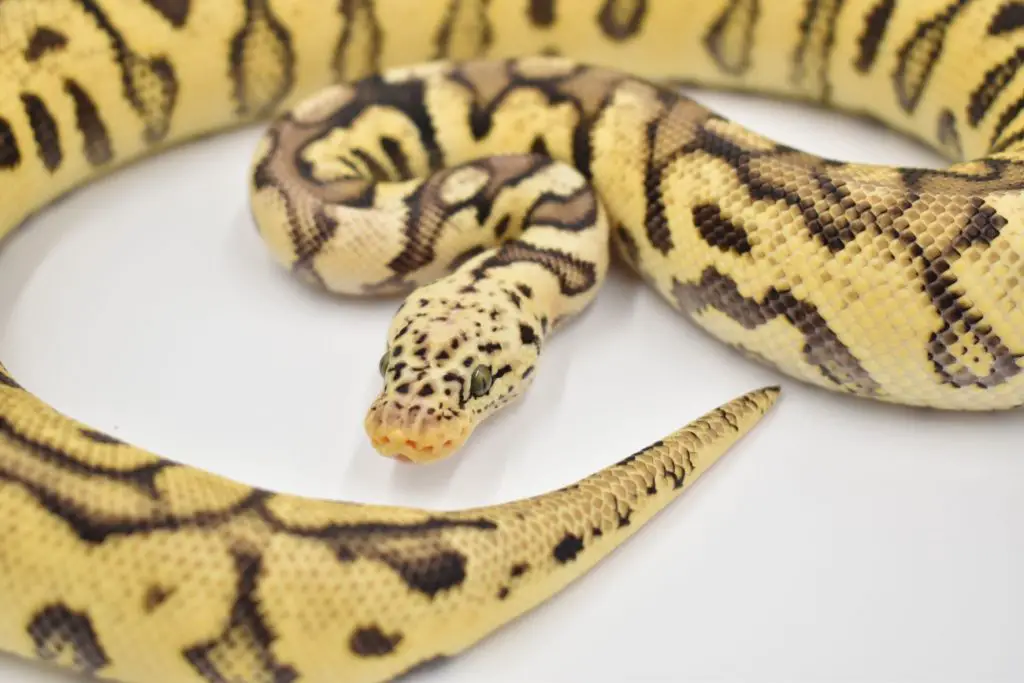
How many clutches do Ball Pythons have a year?
Once they reach sexual maturity, female Ball Pythons almost always lay one clutch of eggs a year. Very occasionally they may lay two clutches within a year. This could mean laying one clutch eight or nine months after the first, for example.
Likewise, if a female python decides she needs more time to fatten up, she may skip a year. In my experience, this is reasonably common. After, the whole breeding process can take six months or more, and the energetic toll is high.
Overall, if you breed Ball Pythons you should expect most of your females to lay once a year, but don’t be surprised if a substantial percentage of them only lay once every two years. Female snakes, and female pythons in particular, make their own plans! They know what’s best when it comes to making good eggs.

Are all Ball Python eggs fertile?
Ball Python eggs are not always fertile. In fact, a great deal of Ball Python clutches contain at least one or two infertile eggs. Hobbyist breeders call these “slugs”, and believe me, they don’t make for a nice surprise!
Fortunately, they are easy to recognise and remove. Slugs are small, yellow-ish and waxy. They look nothing like plump, healthy, white, fertile eggs do.
What’s more, they lack the networks of healthy veins that can be seen in fertile eggs when you candle them. If you decide to breed Ball Pythons, you should expect to encounter slugs every breeding season. Often, it’s just one or two per clutch, and for me it averages around 5-10% of all eggs laid.
If you aren’t familiar with candling, this is what the breeder is doing with a flashlight in the video above. I don’t recommend doing this too often – but it’s a good tool for checking the fertility of freshly laid eggs.
If you ever need to candle eggs, remember to never turn them upside down! Keep them orientated the way they were laid to reduce disruption to the embryo.
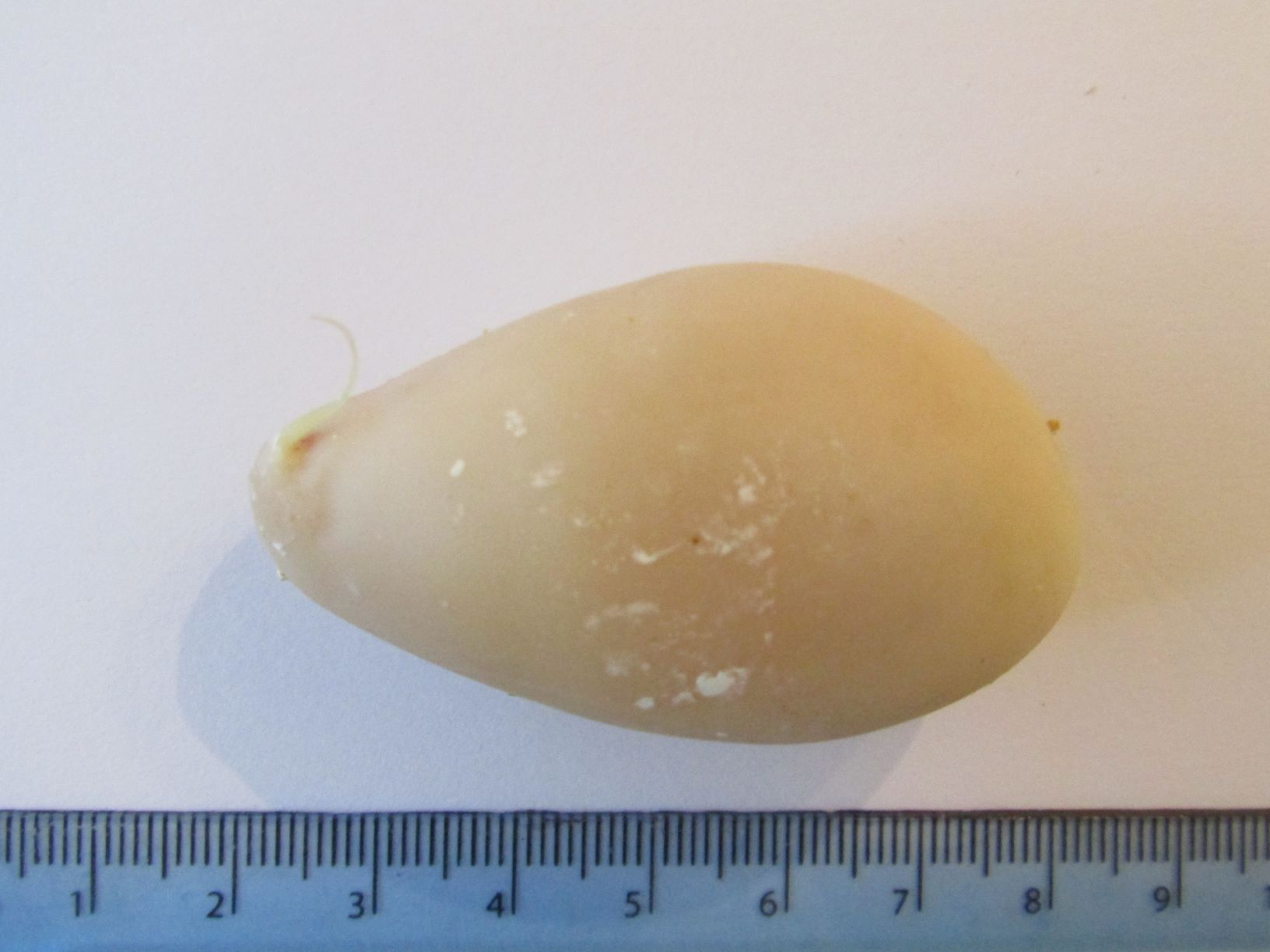
What causes Ball Python slug eggs?
Slugs probably occur for different reasons in different cases, and every breeder has their theory as to the main reason. Personally, I think the most common reasons behind infertile eggs are poor sperm quality, poor female body condition and poor environmental conditions. My reasoning for the for each point is the following:
- Poor sperm quality occurs in certain males of all species. It can be due to genetic defects, disease, or general poor health. Whatever the case, it seems to be one of mother nature’s favourite methods for making sure lower quality males reproduce less.
- Poor female body condition can occur when a female has suffered stress or another issue that has caused it to fast for an extended period or burn more calories than you’d expect. How does this result in less fertile eggs rather than less eggs overall? I’m not entirely sure, but feedback from other breeders does seem to support the idea. It could be that a certain number of eggs are “discontinued”, so to speak, when it becomes apparent there aren’t enough resources for full development. What seems to happen is that rather than skip a year, a female snake will sometimes try to lay eggs, even if her body weight isn’t quite what it should be. It’s in this situation that you as the breeder should decide not to pair her in the first place.
- By poor environmental conditions I really mean temperature. High temperatures kill sperm. In a species that stores sperm for months, high temperatures or a tub that is too small for thermoregulation will cause slugs. If your female is storing sperm for a few months, then a high body temperature will gradually kill them off, resulting in less available sperm when she finally ovulates. I also believe that if male ball pythons are exposed to high temperatures (over 91-92 degrees fahrenheit) they’ll have lower sperm quality/count.
This is only my opinion, however, so don’t take it as scientific fact!
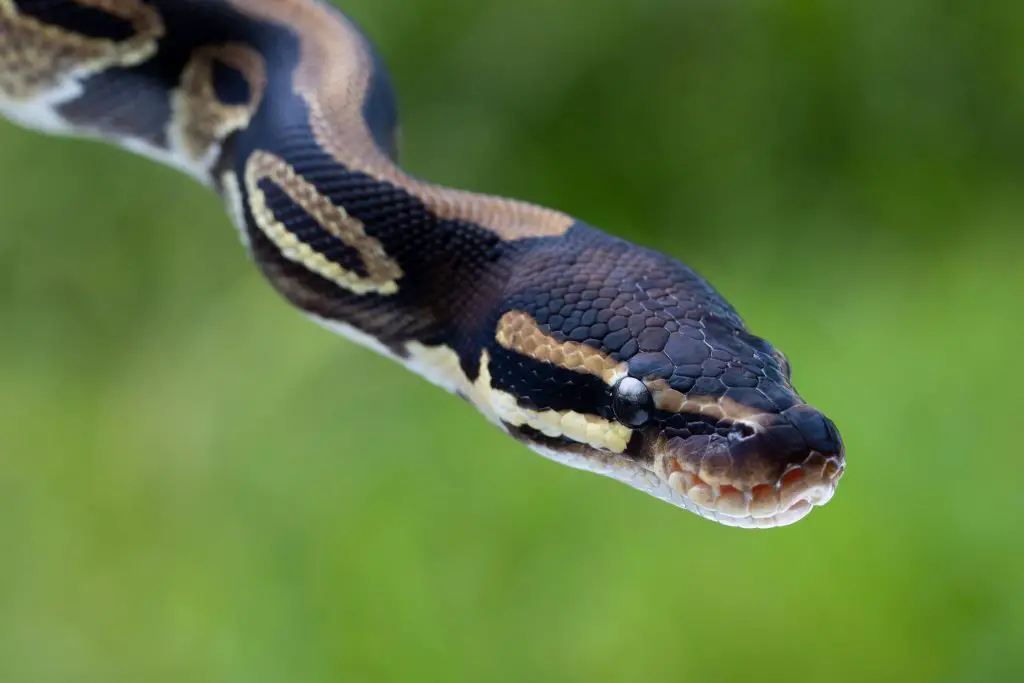
Can Ball Pythons incubate their own eggs?
Although they can’t generate heat like larger species of python, Ball Pythons can still incubate their own eggs. To do this, they choose a nesting area with high humidity and the best possible temperature.
They then lay their eggs in a clump and wrap around them for 55 to 70 days until they hatch.
Sometimes, this maternal incubation process can take a little longer than using an incubator. After, all the female can’t maintain quite as even temperatures as an incubator, but she does a good job of keep them humid.
In an incubator set to 89f (31.6c), for example, you’d expect the eggs to pip after around 55 to 60 days, not 55 to 70. Nonetheless, most keepers who allow their Ball Pythons to incubate their own eggs report high hatch rates – often over 90%.
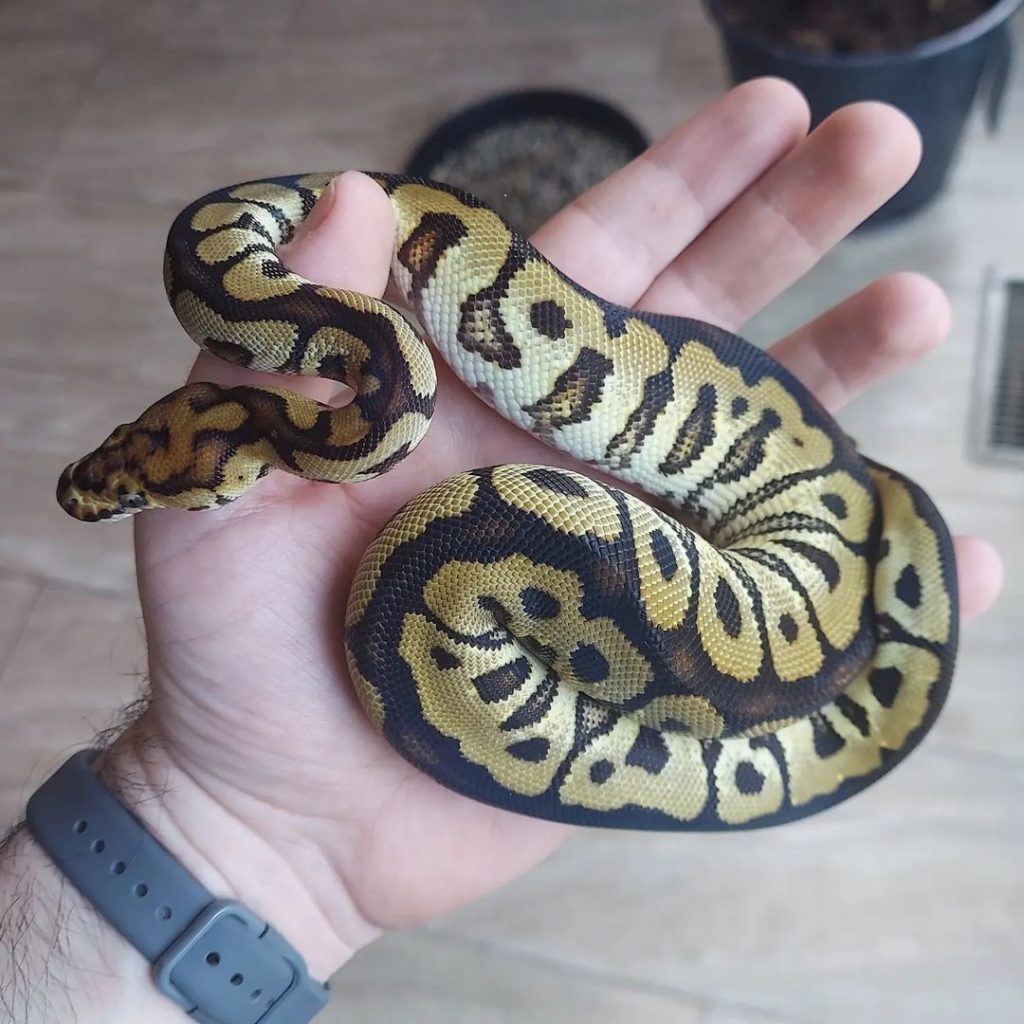
How long does it take a Ball Python to lay eggs?
Because they can store sperm Ball Pythons can take many months to lay eggs following mating. This is known as delayed fertilization, and is a tactic that helps synchronise the emergence of hatchlings with the correct season.
Once they have ovulated, however, they lay eggs after 40 to 60 days. Ovulation is pretty hard to miss, and looks a little like they’ve swallowed a football.
Once a Ball Python starts to lay eggs, this process can take a long time. I’ve observed females that have taken up to twelve hours to finish laying. Notwithstanding, four to six hours is more common.
Why do Ball Pythons only lay this many eggs?
Iteroparity, as I mentioned above, is only one determining factor in brood size – and has a very broad effect. Some iteroparous animals lay one egg, for example, whereas others (like some sea turtles) can lay over a hundred.
The factor that has a much more specific effect on clutch size in the Ball Python is whether the female can wrap herself around them all!
In fact, a common occurrence for a Ball Python breeder is opening the tub of a big, healthy female to find her wrapped 8 or more eggs – but also 1 or two tossed to the side. Breeders call these eggs “rollouts”. Even more puzzling, the vast majority of “roll outs” are completely healthy and incubate without any issues.
They produce perfect, healthy baby ball pythons, just like the eggs that she decided to keep. It seems some females will simply reject an egg or two if they can’t wrap around them all perfectly.
After I encountered this, I started to investigate because frankly, it didn’t make any sense to me. Thankfully, I stumbled upon an excellent study in The Biological Journal of the Linnean Society called Clutch size manipulation, hatching success and offspring phenotype in the ball python (Python regius).
As you probably know, female ball pythons are unable to generate heat like some species but do wrap around their eggs to protect them. This study found that this protection isn’t just against predators, it’s also against the elements.
By removing eggs from females and decreasing the clutch size the authors generated no negative effects on the eggs, but by adding eggs they lowered the hatch rate for the whole clutch! Through their investigation, they found that in big clutches some eggs were drying out and dying because of exposure to the air and that the eggs took longer to hatch (a classic sign of not being warm enough).
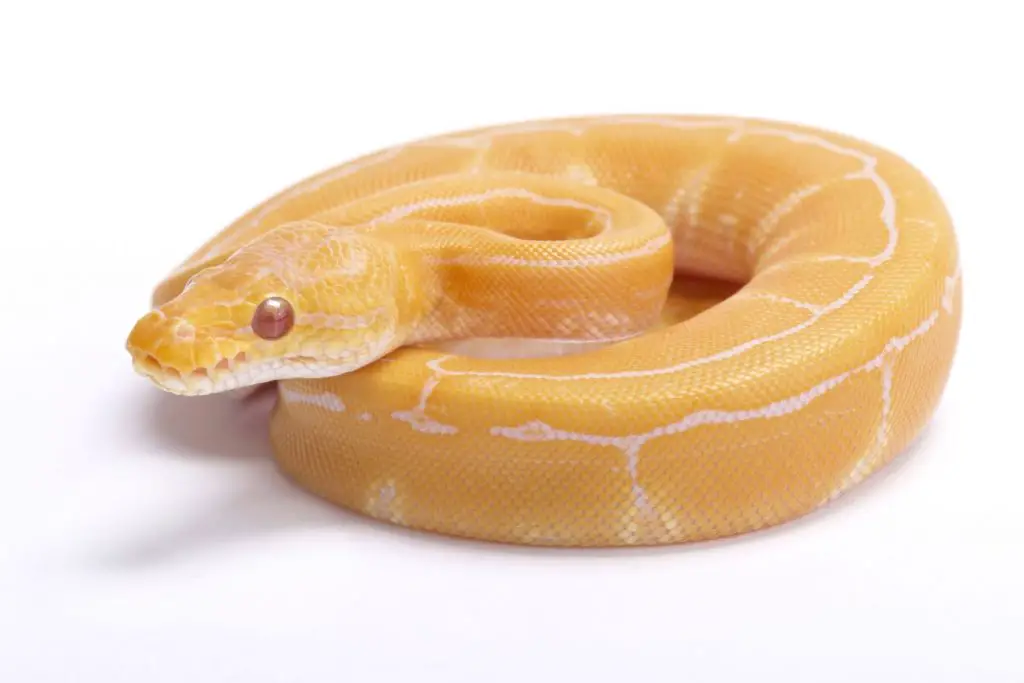
How many eggs do Ball Pythons lay? As many as they can successfully brood
This study seems to indicate that, as in birds, brooding reptiles have an ideal clutch size for optimal parental care (I’m oversimplifying a tad, but this is the gist of it!). In this case, the ideal clutch size corresponds to how many the female can successfully wrap around to protect from the elements.
This varies in accordance with the size of the female but makes the average clutch size roughly 7 eggs.
Admittedly, I’m not one to take a single study as much proof of anything, but this article makes perfect sense. In fact, its results fit perfectly with what fellow hobbyists have observed when letting female ball pythons brood clutches themselves.
Warmth and hydration do impact hatch rates in this species, so why would they produce 20 eggs when they can only protect 7 or 8 from dessication and temperature fluctuations? One or two too many can happen (hence the roll outs), but more than that is highly unlikely!
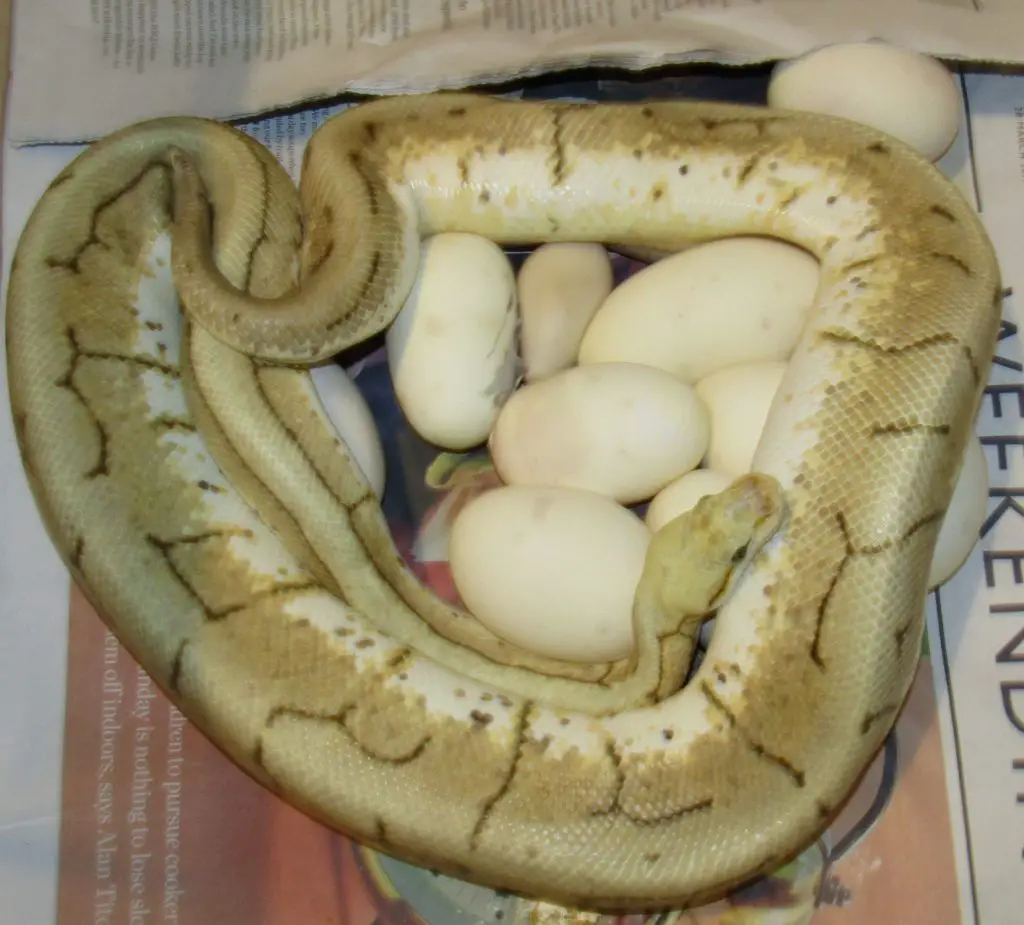
Why don’t Ball Pythons just lay more eggs, but smaller ones?
This is of course the next logical question. Couldn’t these snakes just have evolved to produce 100 little eggs rather than 7 big ones?
One reason why this wouldn’t work is the question of prey. Ball Pythons are rodent predators that ambush them either in their burrows or at the entrance to a hideout.
They are, it seems, very specialised towards this prey type, having thermoreceptive pits in their labial scales to see their body heat, and nice, medium sized teeth to grip them with. They also tend to only constrict prey using the first third of their body, which is likely an adaption to hunting in rodent burrows.
This contrasts sharply with larger, more free-roaming pythons, who will wrap a big prey item up with their whole body as if they intend to roll away with it. If you watch a burmese python constricting, for example, you’ll notice that its technique is very much a “full body” wrap.
Other than rodents they also take nestling birds when available. This is probably due to opportunism rather than true preference, as baby birds are easier and less dangerous to subdue. Animals love energy-saving shortcuts like this, a factor conveniently ignored by those that try to sell us the semi-arboreal ball python idea!
Anyway, I better to get to the point… The evolutionary processes that have led to Ball Pythons being rodent specialists have also selected them for offspring that are big enough to eat rodents. Big babies mean big eggs!
Rodents (and birds) are fairly big at any age, and tiny snakes simply can’t swallow them. If Ball Pythons ate invertebrates, then they could indeed produce lots of tiny babies who would be able to survive by eating small bugs. As rodent specialists, however, tiny babies = starving babies.
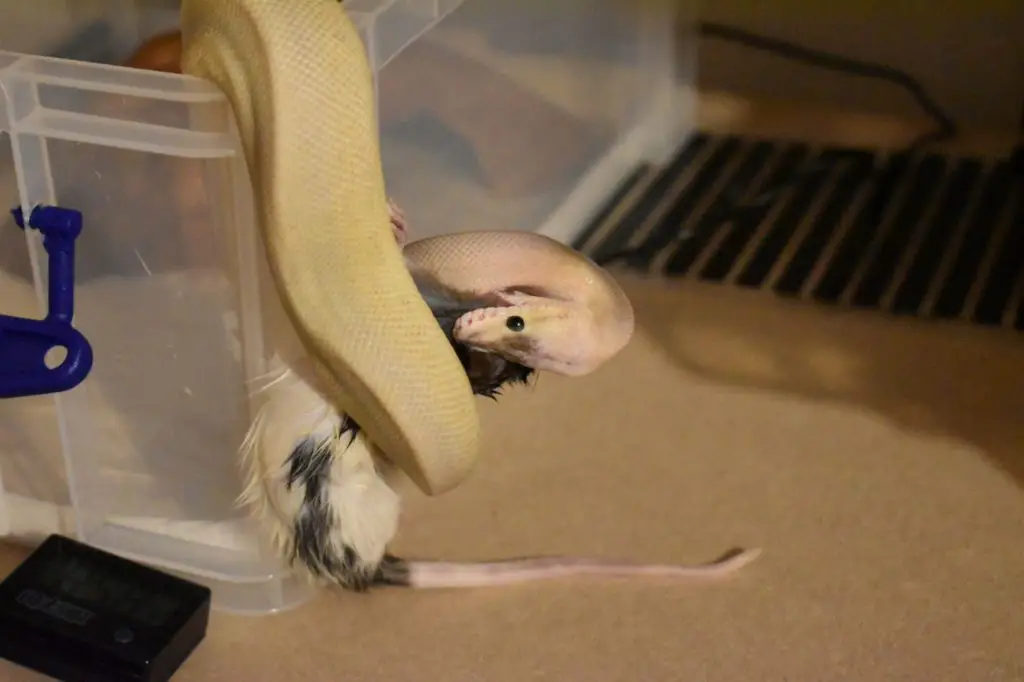
Could another reason be that Ball Pythons are (kind of) a giant snake?
The Ball Python (Python regius) is what is called a “True Python”. This means it belongs to the genus Python, whose species include some of the largest in the world.
The problem is that the Ball Python is the smallest in the genus, only growing to a fraction of the size of some of its giant cousins like the Indian Python (Python molurus), for example. Even pythons outside of this genus tend to be big, with the great Reticulated Python (Malayopython reticulatus) being the longest snake in the world (and perhaps the one that tends to grow largest in captivity).
So, the Ball Python’s closest relatives and even their slightly more distant cousins tend to be large animals. Do animals from families of giants have big babies – even if they have evolved to be much smaller than their relatives?
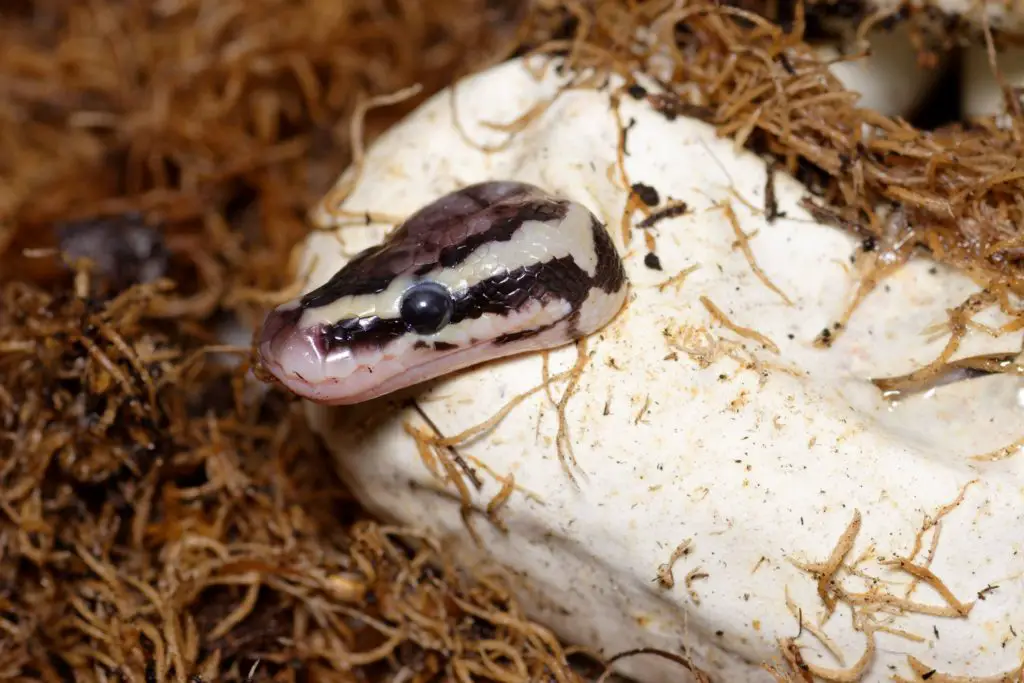
Do animals from giant families have to have big babies – even if they’re smaller than their relatives?
This is a possibility that is still being debated by the scientific community, particularly when it comes to the Kiwi. The Kiwi is a flightless bird belonging to the ratite group, standing about 16 inches (40cm) tall.
Ratites include the largest flightless birds in the world, including the Emu and the Cassowary. Like the Ball Python, the Kiwi is the smallest of its family – but still lays big eggs. Sorry, I meant to say massive eggs! These birds lay a single egg that is up to a quarter of the female’s mass.
The Kiwi is obviously an extreme case of a small bird that is from a big family. Did it evolve to become smaller over time, without managing to shrink down the size of its eggs? Or did the Kiwi evolve to have larger eggs to confer a benefit to the offspring?
Did a similar process occur with Ball Pythons? Or do they mainly have big eggs because they’re rodent eaters, as I mention earlier? It may be a mix of the two, but we probably won’t know for sure for quite some time. Whatever the case, it’s an interesting thought!
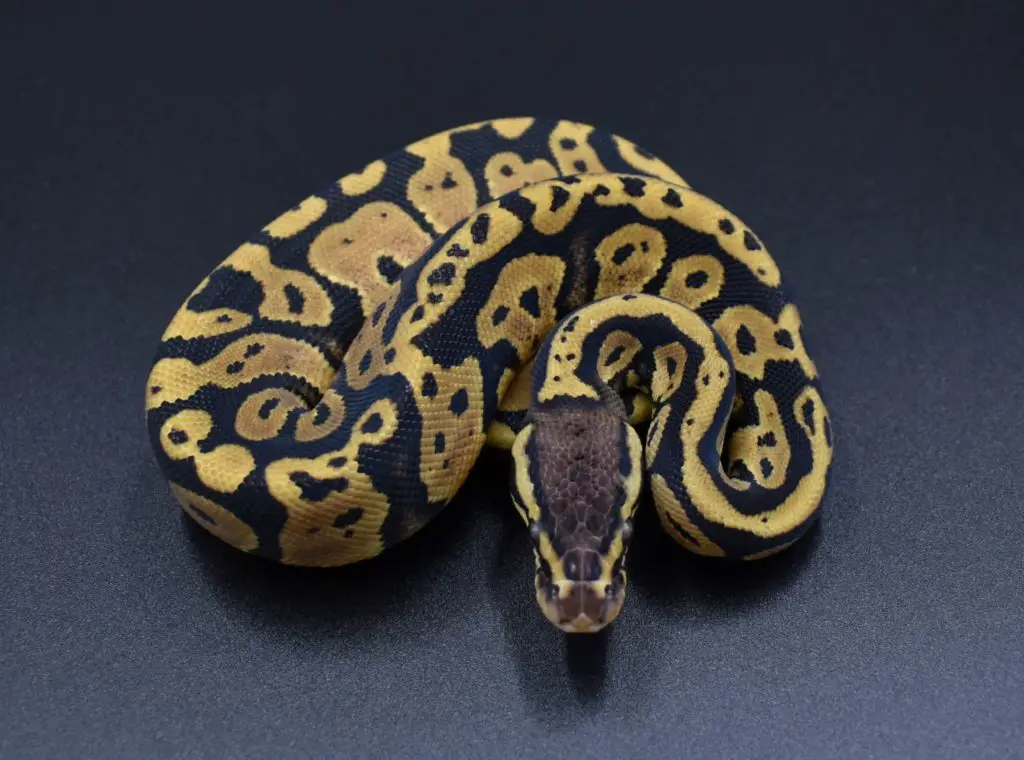
Do Ball Pythons eat their babies?
Ball Pythons do not eat their babies. In fact, they are incredibly gentle and attentive when caring for their eggs. Most of the time, the babies will stay close to the mother for at a few days after hatching before wandering off.
During this period they are completely safe with the mother. This is true of most snakes: they don’t offer a lot of care for their young, but they certainly wouldn’t harm them.
Ball Pythons lay an average of 7 eggs, for good reason!
So, there you have it, a complicated answer to a very simple question. Across both wild and captive female Ball Pythons the average clutch size is roughly 7 eggs. Though a variety of factors influence this, the broad characteristics of the species and their environment make this number the optimum for a decent hatch rate.
If I breed Ball Pythons for the rest of my life, I will almost certainly never see a 30-egg clutch. But this isn’t a bad thing – nature knows best! The goal should always be to produce big, chunky, healthy babies like the ones below, both of which hatched from the eggs pictured in this post.
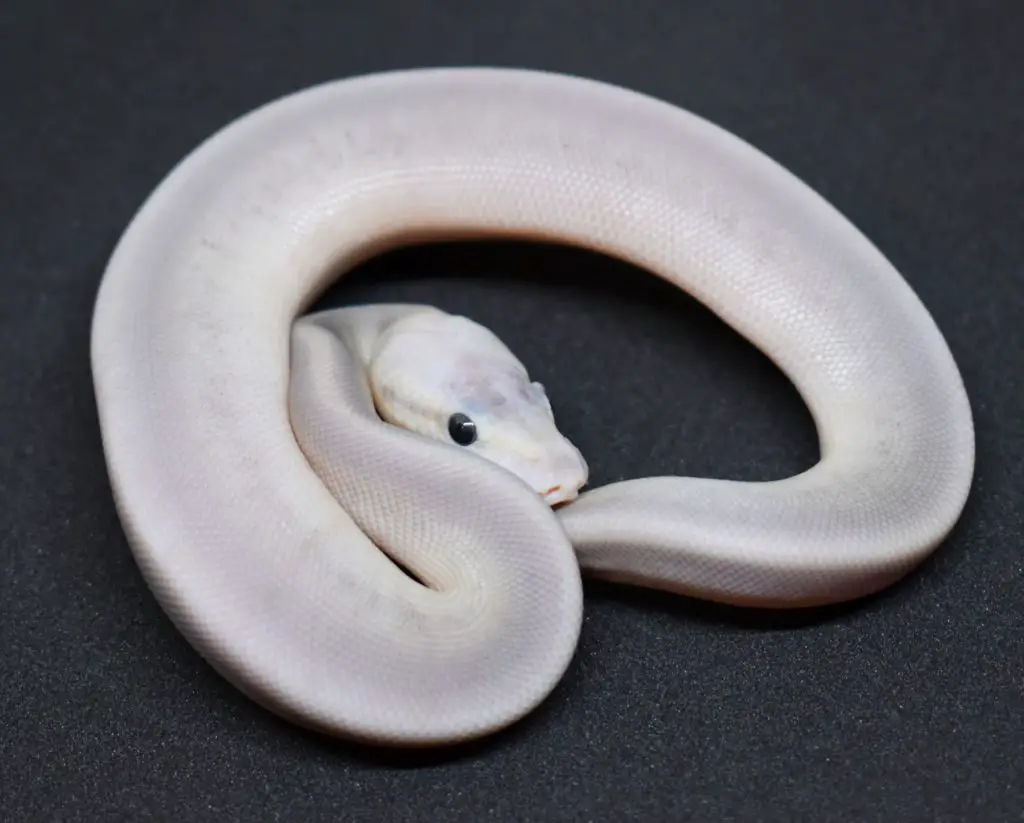

Summary video
Also on this topic:
For more on Ball Python eggs:
Back to the Ball Python eggs and incubation page
